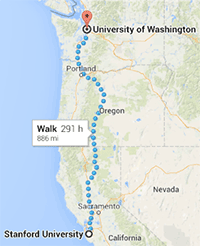
Nothing — not the careful logic of mathematics, not statistical models and theories, not the awesome arithmetic power of modern computers — nothing can substitute here for the flexibility of the informed human mind... Accordingly, both [analysis] approaches and techniques need to be structured so as to facilitate human involvement and intervention. – Tukey & Wilk, Data Analysis & Statistics, 1966
Advances in computing and statistics provide new opportunities for data-driven discovery. However, breakthroughs in science and industry ultimately lie with the ability of empowered investigators to pursue questions, uncover domain-specific patterns, identify errors, and assess model outputs. Though voiced over 50 years ago, the sentiments of Tukey & Wilk ring true today: to facilitate effective human involvement at all stages of data analysis remains a grand challenge.
The mission of the Interactive Data Lab is to enhance people’s ability to understand and communicate data through the design of new interactive systems for data visualization and analysis. We study the perceptual, cognitive and social factors affecting data analysis in order to improve the efficiency and scale at which expert analysts work, and to lower barriers for non-experts.
Background

The UW Interactive Data Lab began as the Stanford Visualization Group, founded in the late 1990s by Prof. Pat Hanrahan. Early Stanford projects included the Polaris system, now commercialized as Tableau Software.
In 2009, Prof. Jeffrey Heer joined the Stanford faculty and assumed leadership of the group. Notable projects include popular visualization systems such as D3.js and Protovis (led by Ph.D. student Mike Bostock), new text visualization and language translation techniques (with the Stanford NLP Group), and interactive data transformation tools such as Data Wrangler (led by Ph.D. student Sean Kandel, with a cast of characters including Prof. Joe Hellerstein at UC Berkeley). Data Wrangler and related work were subsequently commercialized by the start-up company Trifacta.
In 2013, Prof. Heer and team moved to the University of Washington to become the UW Interactive Data Lab, with a new name meant to better reflect our focus on supporting the full life-cycle of data science work. From 2015-18 Prof. Jessica Hullman helped direct the group, then moved to Northwestern. In 2021, Prof. Leilani Battle joined the lab as co-director.
Our ongoing projects include new languages, theoretical models, exploratory analysis tools, and design tools for interactive visualization, techniques for representing uncertainty, and perceptual experiments to assess how well visualizations work.

